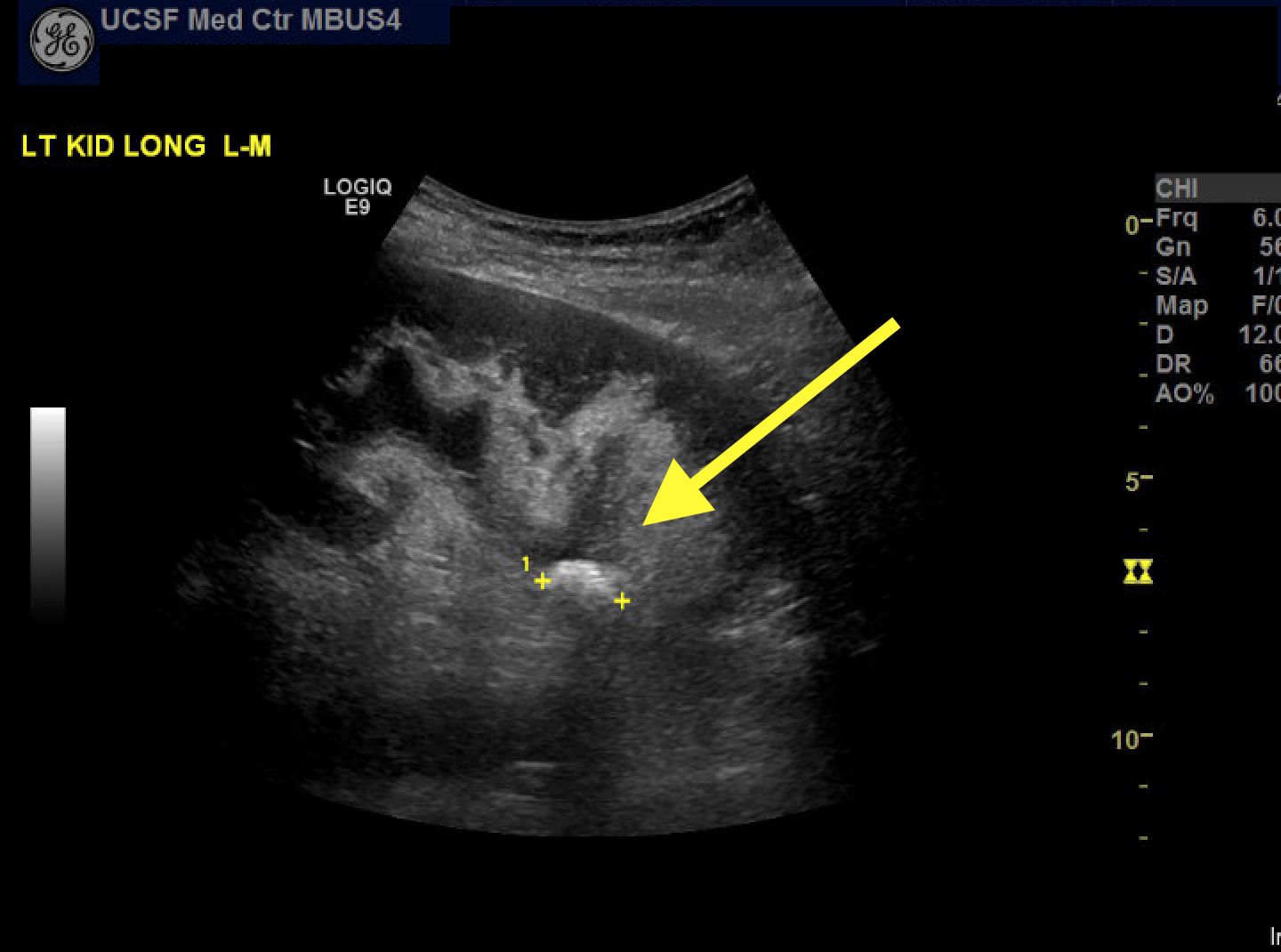PCNL (percutaneous nephrolithotomy) is the surgery of choice for large kidney stones. It requires creating a small incision on the skin of the back to make an opening (working tract) directly into the kidney. A special instrument is then able to break up and clear the stone, and a small tube is left in place in the kidney that exits the skin for 1-2 days after the operation.
Inserting a needle into an appropriate location of the kidney is the most critical step in this surgery, and almost all urologists in the United States use x-ray to guide a needle. However, accumulation of radiation in a patient’s body can lead to long-term side effects including cancer. To reduce these risks, Dr. Thomas Chi has developed a new surgical technique using ultrasound to guide a needle during PCNL in combination with other instruments frequently used in the United States. Unlike x-ray, ultrasound has no radiation and can allow a surgeon to visualize the kidney and kidney stones very well. Dr. Thomas Chi and his team have shown that this “ultrasound-guided PCNL” is as safe and effective as x-ray guidance while reducing radiation exposure to patients by more than ten times.
However, ultrasound-guided PCNL is relatively new to the United States and does require some training to adopt. Most urologists in our country are not familiar with operating an ultrasound machine by themselves and so simply just rely on using x-ray in every procedure. Furthermore, almost two-thirds of them even ask an interventional radiologist to insert a needle into a patient’s kidney in another department, and then transfer the patient back to an operating room to start the PCNL procedure. These unnecessary steps are an obstacle in treating the patients seamlessly and more efficiently.
Under direction from Prof. Jianxing Li, an expert in ultrasound-guided PCNL from Beijing, China, Dr. Thomas Chi and his research team have conducted a study to evaluate the proficiency of newly trained surgeons on initiating ultrasound-guided PCNL. They found that an experienced urologist will require approximately 20 cases to perform this surgery effectively. This surgical technique significantly reduces or even eliminates radiation exposure to patients during PCNL. This benefit is seen even in obese patients or large kidney stones with several branches.

Dr. Chi has recently published two studies to expose and expand his novel technique worldwide. One publication (citation below) is a step-by-step video demonstrating the tips and tricks in performing ultrasound-guided PCNL. A second publication is a comprehensive analysis on how to select the right patients to initiate a surgical experience safely.
Ultrasound-Guided Renal Access for Percutaneous Nephrolithotomy: A Description of Three Novel Ultrasound-Guided Needle Techniques. Chu C, Masic S, Usawachintachit M, Hu W, Yang W, Stoller M, Li J, Chi T. J Endourol. 2016 Feb;30(2):153-8. doi: 10.1089/end.2015.0185. Read more...
Ultrasound Guidance for Renal Tract Access and Dilation Reduces Radiation Exposure during Percutaneous Nephrolithotomy. Chi T, Masic S, Li J, Usawachintachit M. Advances in Urology. 2016. Article ID 3840697, 8 pages http://dx.doi.org/10.1155/2016/3840697 Read more...
Adopting Ultrasound Guidance for Prone Percutaneous Nephrolithotomy: Evaluating the Learning Curve for the Experienced Surgeon. Usawachintachit M, Masic S, Allen IE, Li J, Chi T. J Endourol. 2016 Aug;30(8):856-63. doi: 10.1089/end.2016.0241. Epub 2016 Jun 13. Read more...
Ultrasound Guidance to Assist Percutaneous Nephrolithotomy Reduces Radiation Exposure in Obese Patients. Usawachintachit M, Masic S, Chang HC, Allen IE, Chi T. Urology. 2016 Dec; 98:32-38. doi: 10.1016/j.urology.2016.04.012. Read more...
Using an abdominal phantom to teach urology residents ultrasound-guided percutaneous needle placement. Filippou P, Odisho A, Ramaswamy K, Usawachintachit M, Hu W, Li J, Chi T. Int Braz J Urol. 2016 Jul-Aug;42(4):717-26. Read more...
Ultrasound-guided renal access and tract dilation. Usawachintachit M, Tzou DT, Washington, SL III, Hu W, Li J, Chi T. J Endourol. 2016 Read more...
Ultrasound use in urinary stones: adapting old technology for a modern-day disease. Tzou DT, Usawachintachit M, Taguchi K, Chi T. J Endourol. 2016 Oct 12. Read more...
X-ray free ultrasound-guided percutaneous nephrolithotomy: how to select the right patient? Usawachintachit M, Tzou DT, Hu W, Li J, Chi T. Urology. 2016 Oct 5. pii: S0090-4295(16)30648-3. doi: 10.1016/j.urology.2016.09.031. Read more...
Ultrasound Guidance Reduces Percutaneous Nephrolithotomy Cost Compared to Fluoroscopy. Hudnall M, Usawachintachit M, Metzlet I, Tzou DT, Harrison B, Lobo E, Chi T. Urology. 2016 Dec 23. pii: S0090-4295(16)31017-2. doi: 10.1016/j.urology.2016.12.030. Read more...